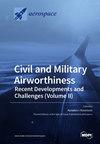摩擦粉对声学衬垫(亥姆霍兹谐振器)影响的实验研究进展
IF 2.2
3区 工程技术
Q2 ENGINEERING, AEROSPACE
引用次数: 0
摘要
本文介绍了使用摩擦粉提高声衬里吸音能力的技术进展,声衬里用于降低航空发动机产生的音调噪声,或用于与低频噪声吸收所用亥姆霍兹谐振器相关的其他应用。实验研究是在欧洲项目 ARTEM(2017-2022 年)期间及之后进行的。这一概念的灵感来源于几位历史学家在古老的基督教教堂中发现的装满灰烬的窄颈瓶。制作这些文物的目的是吸收低频噪音。基于这一创造性想法,本文作者提出了一种新的吸音方法,即在吸音衬里中填充各种类型和数量的天然粉末和人造粉末。考虑到 ARTEM 项目所取得的积极成果,COMOTI 继续使用新技术生产的更细的软木粉末来测试这一概念。在 Kundt 管中进行的测量表明,低频宽带的噪声吸收率显著提高(高频超过 0.9,低频 0.6,500 Hz)。所研究的一些粉末可用于叶片机械领域,以降低飞机的空气动力噪音,或用于需要降低低频噪音的汽车行业。本文章由计算机程序翻译,如有差异,请以英文原文为准。
Advances in Experimental Research on the Influence of Friction Powders on Acoustic Liners (Helmholtz Resonators)
This paper presents the technological advancement of using friction powders to increase the absorption of acoustic liners used in the reduction of tonal noise generated by aero-engines or for other applications related to Helmholtz resonators used in noise absorption of low frequencies. The experimental research was conducted during the European project ARTEM (2017–2022), and after. This concept was inspired by the discovery made by several historians of narrow neck bottles filled with ash in the old Christian churches. These artifacts were made with the purpose of absorbing low frequency noises. Based on this creative idea, the present authors proposed a new method of noise absorption capabilities of acoustic liners filled with various types and quantities of natural and artificial powders. Considering the positive results the ARTEM project offered, COMOTI continued testing this concept by using even finer cork powders manufactured with a new technology. Measurements in Kundt tubes showed that noise absorption increased significantly in broadband for low frequencies (over 0.9 at high frequencies and 0.6 at low frequencies, 500 Hz). Some of the researched powders can be used in the field of bladed machines to reduce the aerodynamic noise of an aircraft or in the automotive industry where the reduction of low frequency noises is necessary.
求助全文
通过发布文献求助,成功后即可免费获取论文全文。
去求助
来源期刊

Aerospace
ENGINEERING, AEROSPACE-
CiteScore
3.40
自引率
23.10%
发文量
661
审稿时长
6 weeks
期刊介绍:
Aerospace is a multidisciplinary science inviting submissions on, but not limited to, the following subject areas: aerodynamics computational fluid dynamics fluid-structure interaction flight mechanics plasmas research instrumentation test facilities environment material science structural analysis thermophysics and heat transfer thermal-structure interaction aeroacoustics optics electromagnetism and radar propulsion power generation and conversion fuels and propellants combustion multidisciplinary design optimization software engineering data analysis signal and image processing artificial intelligence aerospace vehicles'' operation, control and maintenance risk and reliability human factors human-automation interaction airline operations and management air traffic management airport design meteorology space exploration multi-physics interaction.
 求助内容:
求助内容: 应助结果提醒方式:
应助结果提醒方式:


